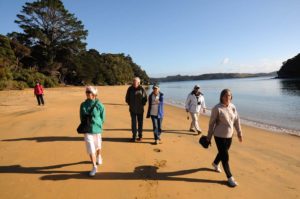NZx March 25th: the pace of change
Naumai
There is no doubt that the pace of change in New Zealand tourism is continuing to grow: everywhere you look there are more visitors out there experiencing what NZ has to offer. A recent trip to the West Coast confirmed that. Even a site like Oparara http://www.karameainfo.co.nz/oparara-basin/ was very busy.
Some of the tourism issues have or are being well debated. Issues such as freshwater, overcrowding at key sites, climate change and visitor levy’s are all part of the current “conversation”.
On a broader level, but very closely aligned with increasing tourism, a number of issues were highlighted last year by Jan Wright, Commissioner for the Environment. Wright raised four key issues: climate change, slow progress in marine protection, lack of trees on unstable hill country, and concerns over the future of our wildlife.
She made the interesting point that environmental issues, rather than separate domains (air, land, marine, climate and fresh water), should form the basis of the shared story. This more holistic approach makes common sense.
Wright’s comments reflect the split in the key debates, and lack of an holistic approach, being canvassed over NZ tourism, the environment and business.
Mayor Goff’s accommodation tax being one such initiative.
A wider, holstic example is the recent study identifying Rakiura’s Port Pegasus for a potential new salmon farming enterprise http://www.stuff.co.nz/southland-times/news/90883538/Stewart-Island-chosen-for-possible-new-aquaculture-project . This central-government funded programme involves Ngai Tahu, the Department of Conservation, the Ministry for the Environment, the Ministry of Primary Industries and the Ministry of Business, Innovation and Employment. Sorry – where is tourism in that mix? Its unbelievable that tourism opportunities are currently heavily restricted in Pegasus yet an industry with doubtful environmental credentials is being supported.
NZ tourism is entering a sensitive phase, particularly in regard to the potential effects on local communities of such growth and the shutting out of potential added value tourism opportunities.
Ka kite ano
Malcolm
